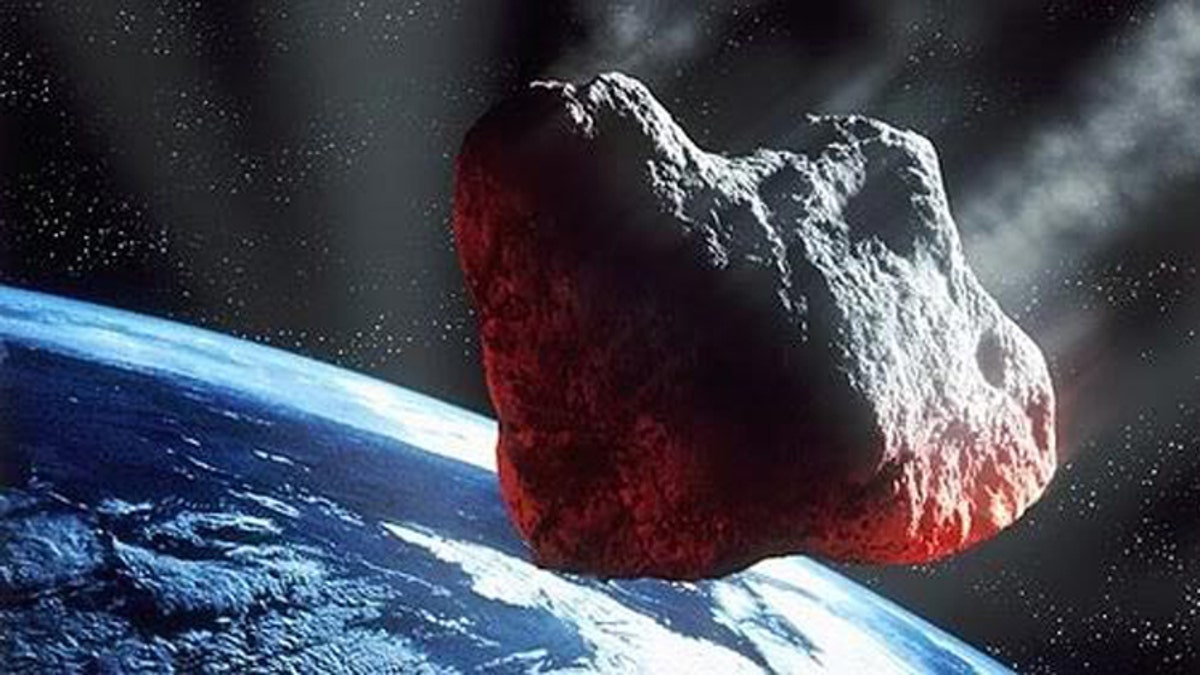
An artist's illustration of an asteroid headed for Earth. (European Space Agency)
An experiment that involved shooting meteorite-like projectiles at volcanic rocks has revealed how high-velocity asteroid impacts could have delivered water to Earth.
During the experiment, conducted at the Vertical Gun Range at NASA's Ames Research Center in California, scientists fired marble-sized projectiles at the targets at speeds of 11,200 mph (18,000 km/h).
These projectiles had a similar composition to carbonaceous chondrites, a group of meteorites that come from ancient, water-rich asteroids. In the early stages of Earth's evolution, these asteroids frequently hit the planet at very high speeds. The experiment, described in a paper published online today (April 25) in the journal Science Advances, revealed that during such collisions, up to 30 percent of the water from the asteroid could get trapped in the debris created by the impact. [Photos: Asteroids in Deep Space]
"The origin and transportation of water and volatiles is one of the big questions in planetary science," said Terik Daly, who's now a postdoctoral researcher at Johns Hopkins University but led the study while completing his doctorate at Brown University.
More From Space.com
"These experiments reveal a mechanism by which asteroids could deliver water to moons, planets and other asteroids," Daly said in a statement.
Astronomers originally thought that Earth's water came mostly from comets. However, recent research has pegged asteroids as the probable main delivery system. Measurements have shown that water found on Earth has a similar composition of isotopes — variants of the same chemical element that differ in the number of neutrons — as water contained in carbonaceous asteroids.
But it wasn't clear how those asteroids could have delivered their water to what was once a completely arid Earth.
"Impact models tell us that impactors should completely devolatilize at many of the impact speeds common in the solar system, meaning all the water they contain just boils off in the heat of the impact," study co-author Peter Schultz, a professor in Brown's Department of Earth, Environmental and Planetary Sciences, said in the same statement. "But nature has a tendency to be more interesting than our models, which is why we need to do experiments."
When the researchers shot their mini-meteorites at the mini-Earths, they observed that a significant proportion of the water from the projectiles got trapped in rock — both in the stuff that was melted by the heat of the impact and in the material that coalesced from the jumble of impact debris, a type of rock known as a breccia.
"What we're suggesting is that the water vapor gets ingested into the melts and breccias as they form," Schultz said. "So even though the impactor loses its water, some of it is recaptured as the melt rapidly quenches."
The researchers said the process could also explain the presence of water in the lunar mantle and some other areas of the moon, such as Tycho Crater.
"The point is that this gives us a mechanism for how water can stick around after these asteroid impacts," Schultz said. "And it shows why experiments are so important, because this is something that models have missed."
Originally published on Space.com.
